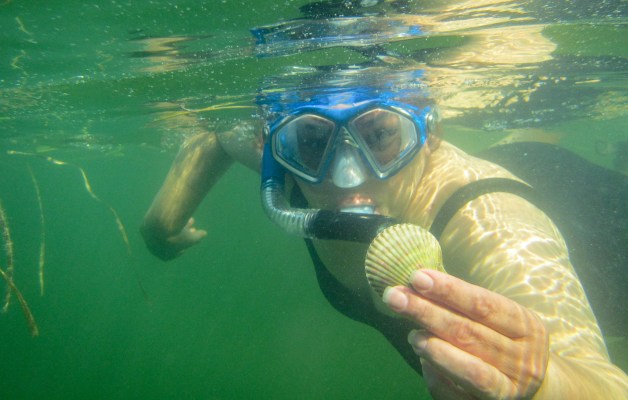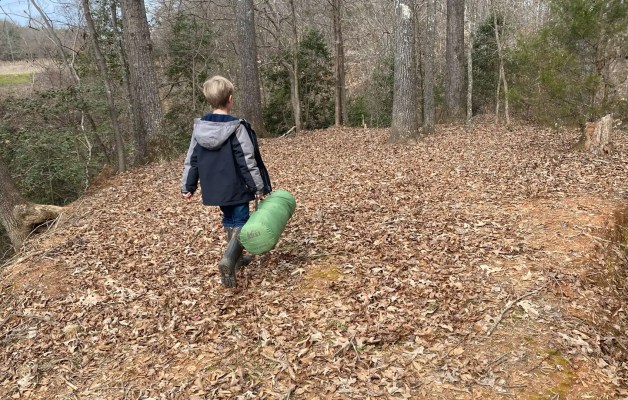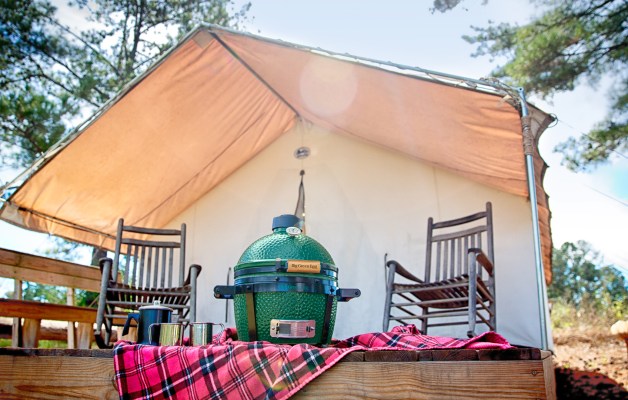
The original Spanish name “Isla Morada” means purple island — a reference to 16th-century explorers impressed with mass aggregations of indigenous purple snails on the shores of what’s now called Islamorada. Or was it the brilliant purple bougainvillea blossoms found throughout this section of the upper Florida Keys?
You may not find a definitive explanation of the name’s origin, but there’s no questioning the colorful array of family-friendly attractions Islamorada offers. Awash with that pleasantly detached island vibe, yet close enough to mainland Florida for easy travel and provisioning, the destination known as the Village of Islands presents a bounty of terrestrial and waterborne delights.
Stretching 20 miles along the Overseas Highway (U.S. 1), Islamorada comprises four inhabited keys — Plantation, Windley, Upper Matecumbe (site of the original Islamorada village), and Lower Matecumbe — the offshore islands of Indian Key and Lignumvitae Key, and the private Tea Table Key.

With a pleasant blend of casual Keys culture — plenty of shops, eateries and diverse lodging opportunities — and those amazing sunsets, Islamorada’s list of activities and entertainment will fill a vacation schedule at whatever pace fits your style.

Bend A Rod
Islamorada wears its title well as the “Sportfishing Capital of the World,” as no other destination offers greater access to a wider array of species. The angling ambiance immediately effervesces from Whale Harbor’s street-side charter boat row to the constant crowd of tarpon, snapper, sharks and parrotfish visible from the docks of historic Bud N’ Mary’s Marina.


Granted, fishing’s a way of life throughout the Florida Keys, but Islamorada anchors its reputation in geographic uniqueness. Starting with Key Largo, just below Homestead, the Keys archipelago bends southwest toward the nation’s southernmost point — Key West.

As the islands slant progressively farther from the mainland, Islamorada maintains the greatest proximity to oceanside flats, Florida Bay and the mangrove creeks of Everglades National Park, along with coastal and offshore ranges of the Atlantic Ocean and Gulf of Mexico. Given the islands’ significant windbreak, anglers can always find a leeward area by fishing the bay or ocean side.

From bonefish and permit on the flats to snook, trout, redfish and tarpon in the backcountry; grouper, snapper and amberjack on offshore structure; and dolphin, tuna, wahoo and billfish in the Atlantic depths, Islamorada accommodates any saltwater angling interest. Visitors will find charter boats for any target, but private boaters have several launch options, while the area also offers stellar options for kayaks and standup paddleboards.
Beginners and casual anglers will find plenty of fishing opportunities from pedestrian-friendly bridges at Channel 5, Channel 2 and Tavernier Creek. There’s also good shore-level access to bridges at Whale Harbor (between Upper Matecumbe and Windley keys) and Snake Creek (between Windley and Plantation keys). Work with the tides and you might reel in a keeper snapper, grouper or yellow jack, along with a mix of brilliant tropicals, like parrotfish, puddingwife wrasse and blue tang.
Local History
Spanish explorers recorded their first sighting of the Florida Keys on May 15, 1513. In the decades following, the islands would see various produce farms, trading posts and a lucrative “wrecking” industry — salvage crews that retrieve a wrecked ship’s cargo and charge a portion of its value.
The first settlers arrived from the Bahamas in the mid- to late 1800s, but travel was limited to boats. Railroad magnate Henry Flagler forever changed the Keys’ destiny by filling in swamps and building bridges to extend his East Coast Railroad from Miami to Key West. Completed in 1912, the railway brought tourists and fishermen, with Islamorada serving as one of the key stations.
The establishment of local roads starting in 1928 launched the Keys’ rapid development, but a natural disaster ultimately yielded today’s complete connection. After the 1935 Labor Day hurricane severely damaged Flagler’s Key West line, the state of Florida purchased the remaining right of way bridges below Dade County, rebuilt the entire system for vehicle travel and created the now-famous Overseas Highway.
Islamorada’s other historical elements include the Florida Keys History and Discovery Center (Upper Matecumbe), Windley Key Fossil Reef Geological State Park, Indian Key Historic State Park (1800’s ruins) and the 1935 Hurricane Monument (Upper Matecumbe).
While in town, be sure to check out these local faves:

Feed The Tarpon
An absolute must-see Islamorada treasure, Robbie’s Marina (upper end of Lower Matecumbe, bayside) complements its waterfront dining, kayak rentals, local arts/crafts and head boat with an up-close-and-personal experience with wild tarpon. For decades, tarpon of all sizes have flocked to this picturesque marina where visitors kneel or lie across the docks to hand-feed these silver beauties.
Tarpon have no teeth, but they have strong bony jaws, and their tendency to suddenly break the surface to grab a free meal is a real heart-pounder — but it makes for killer vacation photos. (For a shorter reach and less anxiety, visit on high tide when the water’s closer to the dock surface.)

Sun And Sand

While the Keys generally lack the broad, sandy public beaches of peninsular Florida, Anne’s Beach (west end of Lower Matecumbe) offers access to a narrow, mangrove-lined, dog-friendly beach with a 300-foot boardwalk through coastal wetlands. Dedicated to local environmentalist Anne Eaton, this peaceful getaway includes picnic pavilions, a restroom and multiple beach access points.

Another tucked-away beach awaits at Library Beach Park, behind the Monroe Public Library (Upper Matecumbe, bayside).

Giant Crustacean
At Rain Barrel Village on Plantation Key, you’ll find an eclectic mix of shops, galleries and boutiques with local arts, crafts, jewelry and clothing. In the breezy tropical garden, enjoy a light bite or something cold to drink, then grab a selfie with the area’s most recognizable landmark: Betsy the Lobster, a 30-foot-tall, 40-foot-long replica of the famous Florida spiny lobster.
For an up-close-and-personal peek at the real thing, walk to the edge of any seawall or bridge riprap at low tide and you’ll often see those telltale antennae of “bugs” hiding beneath rocks. If you’re lucky, you might also see a few lobsters walking along the shallow rocks. (Spiny lobster harvest is strictly regulated. Details here.

Meet The Animals
Visit Theater of the Sea (Windley Key) for marine life exhibits, tropical gardens, animal shows (dolphins, sea lions, parrots) and interactive opportunities to swim with dolphins and wade the shallows and feed colorful parrotfish. Elsewhere, diving the oceanside patch reefs offers dazzling views of tropical fish, eels, nurse sharks and more.
Just about anywhere in Islamorada, you can expect to find invasive green iguanas sunning on lawns, tree limbs and roadsides. The young ones are vivid green, while larger adults can take on rusty brown tones. Give iguanas a comfortable space and they’ll pose long enough for pics.
A smaller but highly photogenic lizard — the aptly named northern curly-tailed lizard — likes a drier, rocky habitat, like parking lots and concrete seawalls, but you’ll also see them on tree limbs and boardwalks. Typically more patient than iguanas, curly-tailed lizards were introduced to south Florida in the 1940s to control sugarcane pests.

Under The Sea
The History Of Diving Museum (Upper Matecumbe) is an independent not-for-profit facility that collects, preserves, and interprets the artifacts, antiques, books, documents, and photographs that tell the tales of man’s undersea exploration. Exhibits include historic dive gear, underwater cameras, and a 16th-century treasure chest.

Snorkelers and scuba divers will enjoy visiting the San Pedro Underwater Park (near Indian Key) and viewing the remains of a Spanish galleon sunk in 1733.

Natural Accents
From intricate banyan trees to coconut palms to royal poincianas exploding with fiery red/orange blossoms, Islamorada is dressed with botanical brilliance. The beauty is randomly spread throughout the islands, but particularly popular spots include the 40-acre Islamorada Founders Park (beach access) on Plantation Key and Lignumvitae Key Botanical State Park (accessible by boat).
Find local parks here.
Get There
Islamorada sits 1 1/2 hours from Miami and 2 hours from Key West. Take the Florida Turnpike south to U.S. 1 south, which becomes the Overseas Highway. Option: Take the Card Sound Road split-off in Florida City to visit North Key Largo on your way down.
Find travel directions here.





